TLDR A natural, eco-friendly treatment using casein and tannic acid strengthens hair by 21% while keeping it elastic.
This study introduces an environmentally friendly hair protection method using a photo-crosslinked casein-tannic acid system, activated by riboflavin phosphate and blue light. The treatment significantly enhances hair tensile strength by approximately 21% compared to untreated hair, while maintaining natural elasticity. The coating process involves solubilizing casein in NaOH, incorporating tannic acid, and adding riboflavin phosphate as a photoinitiator, resulting in a stable protective layer. Rheological analysis, FTIR spectroscopy, and SEM analysis confirm successful network formation and integration with the hair surface. This green chemistry approach offers a sustainable alternative to conventional hair treatments, utilizing natural, food-grade components and mild processing conditions to effectively protect hair from daily damage.
 January 2025 in “Advanced Materials Interfaces”
January 2025 in “Advanced Materials Interfaces” Tannic acid can reduce hair loss by 56.2% by coating hair and releasing beneficial molecules.
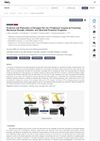 1 citations
,
July 2023 in “Biomimetics”
1 citations
,
July 2023 in “Biomimetics” A new hair treatment using a natural polyphenol complex improves hair strength, reduces static, and protects against UV damage.
 3 citations
,
June 2023 in “ACS sustainable chemistry & engineering”
3 citations
,
June 2023 in “ACS sustainable chemistry & engineering” The study found a green method for strengthening hair works on all hair colors and is eco-friendly.
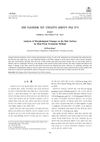 April 2023 in “Han'gug miyong haghoeji/Journal of the Korean society of cosmetology”
April 2023 in “Han'gug miyong haghoeji/Journal of the Korean society of cosmetology” Direct heat perms cause more damage to hair than softening heat perms.
 2 citations
,
January 2023 in “Pharmaceuticals”
2 citations
,
January 2023 in “Pharmaceuticals” Natural products and phytochemicals may help with hair regrowth, but more research is needed.
4 citations
,
June 2022 in “Journal of cleaner production” New eco-friendly method strengthens and sets hair using light and causes less damage.
12 citations
,
July 2017 in “International Journal of Cosmetic Science” N‐AOHPA is a promising alternative to traditional surfactants for better hair conditioning.
 5 citations
,
January 2015 in “Current problems in dermatology”
5 citations
,
January 2015 in “Current problems in dermatology” The document provides a practical guide for diagnosing and treating various types of hair loss.
14 citations
,
January 2015 in “Skin Appendage Disorders” Brazilian keratin treatment can cause severe skin reactions.
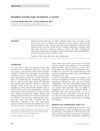 40 citations
,
June 2013 in “Journal of cosmetic dermatology”
40 citations
,
June 2013 in “Journal of cosmetic dermatology” Brazilian keratin treatments can straighten hair but may contain harmful formaldehyde.
 13 citations
,
November 2022 in “Chemical Science”
13 citations
,
November 2022 in “Chemical Science” Inorganic-based biomaterials can quickly stop bleeding and help wounds heal, but they may cause issues like sharp ion release and pH changes.
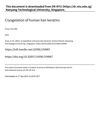
Human hair keratins can be turned into useful 3D biomedical scaffolds through a freeze-thaw process.
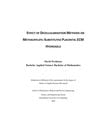
PlacMA hydrogels from human placenta are versatile and useful for cell culture and tissue engineering.
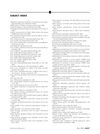 March 2014 in “Journal of The American Academy of Dermatology”
March 2014 in “Journal of The American Academy of Dermatology” The document lists various dermatology topics, treatments, and diagnostic methods.
119 citations
,
November 2016 in “American journal of human genetics” Mutations in three genes cause Uncombable Hair Syndrome, leading to frizzy hair that can't be combed flat.











